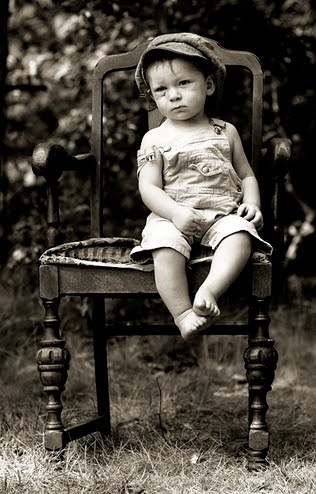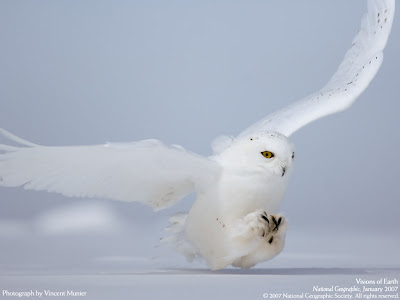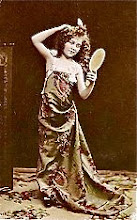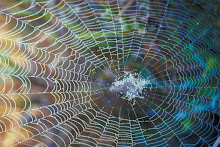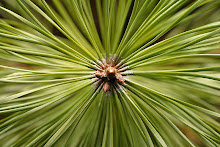Wednesday, December 23, 2009
Saturday, December 19, 2009
When Christmas brought a new dolly
When I was a child our family did not have a lot of money; usually by the end of the month dinner consisted of a bowl of noodles and powdered milk to drink. We never really felt we were poor even though a store bought dress or new car were always out of the question. Every year as Christmas came along, my three sisters and I would pour over the Sears and Roebucks Christmas catalog dreaming of Santa and his bag full of toys. My parents gave each of us a limit of three gifts we could ask for every year, one of which was unquestionably a new dolly.
Below: Tiny Tears (in blue) an American Character
Co. doll produced starting in
1950 with molded or rooted hair, a doll that "cried
real tears" either a rubber body or
later all vinyl doll, highly collectible with a value
today of $65 - $225.
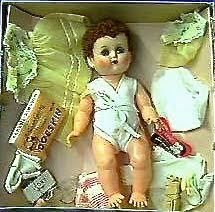 For our mother it was her talent and ability with sewing that provided beautiful wardrobes for each new doll under the tree. She remembered growing up during the Depression when there never were any new dolls for her. When she was 12 years old her young uncles went together to buy her the one and only doll of her childhood. So it was important to our mother that no matter what, her four daughters would find new dolls under the Christmas tree every year. She must have stayed up late night after night secretly sewing complete wardrobes for each of her daughters new dolls. Of course the dolls were delivered by Santa Claus so mom never did get her due praise for all her hard work. We simply believed that Mrs. Claus and the elves sewed all those tiny precious layettes for baby dolls or evening gowns for those we called "high heel dolls".
For our mother it was her talent and ability with sewing that provided beautiful wardrobes for each new doll under the tree. She remembered growing up during the Depression when there never were any new dolls for her. When she was 12 years old her young uncles went together to buy her the one and only doll of her childhood. So it was important to our mother that no matter what, her four daughters would find new dolls under the Christmas tree every year. She must have stayed up late night after night secretly sewing complete wardrobes for each of her daughters new dolls. Of course the dolls were delivered by Santa Claus so mom never did get her due praise for all her hard work. We simply believed that Mrs. Claus and the elves sewed all those tiny precious layettes for baby dolls or evening gowns for those we called "high heel dolls".
These pretty little dolls were actually "Little Miss
Revlon" dolls created by the
Revlon Company to get little baby boomer girls
acquainted with the Revlon brand
name early. "Miss Revlon" in 15", 18", 20" and
22" sizes, and "Little Miss Revlon"
in the 10 1/2" size was Ideal's first grown up
In the fall we sisters were often asked to donate one of our dolls to the needy children. My grandmother would take them and with her senior friends rehabilitate the dolls and other toys for needy children at Christmas. So we never really accumulated a lot of dolls since so many of our old dolls went to the poor.
The 1950s-60s saw many new doll lines come into existence. We were the baby boomers and there were millions of us - millions of little girls arms outstretched ready to hug a new dolly.
Ginny doll, Shirley Temple doll and Bride doll.
Ginny doll, a favorite of little girls from the late 1940s
through the 1950s is still made today.
She was produced by the Vogue Doll Co. originally, an
8 " doll with a hard plastic body and
head. She originally sold for $1.98 and was unique in
that she had separate outfits available,
Shirley Temple dolls had a series that ran from 1958-
Below: Tiny Tears (in blue) an American Character
Co. doll produced starting in
1950 with molded or rooted hair, a doll that "cried
real tears" either a rubber body or
later all vinyl doll, highly collectible with a value
today of $65 - $225.
Betsy Wetsy shown with layette, produced 1954-
1962 by Ideal came in 13 1/2", 14", 16" and 20",
featured either molded or rooted curly wool hair.
Starting price was around $8.00 and the value
today runs from $300 - $625.
today runs from $300 - $625.
 For our mother it was her talent and ability with sewing that provided beautiful wardrobes for each new doll under the tree. She remembered growing up during the Depression when there never were any new dolls for her. When she was 12 years old her young uncles went together to buy her the one and only doll of her childhood. So it was important to our mother that no matter what, her four daughters would find new dolls under the Christmas tree every year. She must have stayed up late night after night secretly sewing complete wardrobes for each of her daughters new dolls. Of course the dolls were delivered by Santa Claus so mom never did get her due praise for all her hard work. We simply believed that Mrs. Claus and the elves sewed all those tiny precious layettes for baby dolls or evening gowns for those we called "high heel dolls".
For our mother it was her talent and ability with sewing that provided beautiful wardrobes for each new doll under the tree. She remembered growing up during the Depression when there never were any new dolls for her. When she was 12 years old her young uncles went together to buy her the one and only doll of her childhood. So it was important to our mother that no matter what, her four daughters would find new dolls under the Christmas tree every year. She must have stayed up late night after night secretly sewing complete wardrobes for each of her daughters new dolls. Of course the dolls were delivered by Santa Claus so mom never did get her due praise for all her hard work. We simply believed that Mrs. Claus and the elves sewed all those tiny precious layettes for baby dolls or evening gowns for those we called "high heel dolls".These pretty little dolls were actually "Little Miss
Revlon" dolls created by the
Revlon Company to get little baby boomer girls
acquainted with the Revlon brand
name early. "Miss Revlon" in 15", 18", 20" and
22" sizes, and "Little Miss Revlon"
in the 10 1/2" size was Ideal's first grown up
woman doll, sometimes called a
teenage doll, and created some controversy,
produced from 1956 -1959 (eclipsed by
Barbie the following year) she had a new 'magic
touch' vinyl body, rooted saran
hair and a swivel waist. She was the best selling
doll in 1956.
In the fall we sisters were often asked to donate one of our dolls to the needy children. My grandmother would take them and with her senior friends rehabilitate the dolls and other toys for needy children at Christmas. So we never really accumulated a lot of dolls since so many of our old dolls went to the poor.
The 1950s-60s saw many new doll lines come into existence. We were the baby boomers and there were millions of us - millions of little girls arms outstretched ready to hug a new dolly.
Ginny doll, Shirley Temple doll and Bride doll.
Ginny doll, a favorite of little girls from the late 1940s
through the 1950s is still made today.
She was produced by the Vogue Doll Co. originally, an
8 " doll with a hard plastic body and
head. She originally sold for $1.98 and was unique in
that she had separate outfits available,
selling from $1.00 - $2.98.
Shirley Temple dolls had a series that ran from 1958-
1963 by Ideal. The doll was available in 12", 15", 17", and
19" sizes, with rooted hair and a molded vinyl body.
Originally she sold for $9- $15
but today those dolls are valued between $175 - $550.
The Bride Doll - there were many bride dolls produced in
the 1950s, most were just called
bride doll. I'm sure many baby boomer little girls
dreamed of finding a bride doll under the Christmas tree.
When I was grown and on my own away from home, nothing brought back those Christmas memories as much as the scent of a new doll, vinyl was new back in the 50s - so yes there were times when I would wander into a toy store in the 1970s just to inhale the new doll scent. Unfortunately, dolls today all seem to look alike and lack imagination. But you can still find many examples of our old childhood playmates still available to bring home - if you know where to look! Maybe in Santa's bag!
Top, Patty Playpal, produced 1959 -1961
by Ideal and reissued in the 1980s. She stood 35" tall,
the size of a 3 year old child and had a vinyl blow molded body and rooted saran hair. She originally sold for $29 which must have come very dear for my mother to purchase for me.Today the doll is valued from $350-$500.
Center, this unusual doll was one of the first
dolls I remember receiving for Christmas.
This is a photo found on the internet but she is exactly
as I remember her when I was 5 years old. I later discovered she was called 'Magic Lips" by Ideal and was produced only from 1955-1956. She was 23" tall,
with a vinyl head and limbs and an oil cloth body, and rooted saran hair. She had a mouth that opened and closed when you pushed on her back and she said "mama."
She originally sold for $14.98 and today is valued at $200.
Bottom, Lotus Blossom doll (Dollikin) by Uneeda was an unusual doll produced from 1957-1962. An 18" doll with a hard vinyl body, limbs and head, she was fully jointed, had a twist waist, jointed elbows, wrists, knees and ankles. One doll of my older sister's that I truly coveted at one time!
Merry Christmas, Happy Holidays! And I hope you find what you are looking for under your tree! Peace, Maureen
Monday, December 14, 2009
The Winner is Amy!
Congrats Amy! You were selected with help from Random.org. Hurray for Amy winning the tile mosaic butterfly box I donated to Stacey Merrill's blog giveaway at Artsnark's Artifacts! It is in the mail as I write this.
Sunday, December 6, 2009
My Free Giveaway on Artsnark's Artifacts Blog
I am the featured artist this week on Stacey Merrill's blog Artsnark's Artifacts at http:artsnark.blogspot.com. Stacey is a fellow Melange Team Etsy teammate and a great friend. She has enough energy and spirit for the whole team! I have donated a special tile box of mine as the freebie in this week's drawing. To enter you just need to visit Artsnark's blog and leave a comment under my feature. Later this weekend she will be featuring my art studio in her series showing where women artists work. I want to thank Stacey for both of these opportunities and commend her on her presentation! Visit the free giveaway of my artwork post here :http://artsnark.blogspot.com/2009/12/new-giveway-artist-feature-maureen_03.html
Here is the tile box I am offering free - including postage - on Artsnark's Artifacts blog giveaway until Thursday. This is a wooden box 6" square, 2 3/4" deep - outside under the beaded fringe is paper mosaic with tiny glass tile along the base, beaded fringe hangs from green satin ribbon. Inside is mosaic in 1" glass tiles on all four sides with a 4" square porcelain tile featuring a butterfly painted with Pebeo porcelain glazes - there are also 6 Swarovski crystals highlighting the hand painted butterfly. The top edge is lined with tiny glass tiles. Between the butterfly tile and the inner edge of the box there are aquamarine chips set in polymer medium.
So if you want to enter the giveaway get on over to Stacey's blog and post a comment! http://artsnark.blogspot.com/2009/12/new-giveway-artist-feature-maureen_03.html
The tour of my studio space is up now on Stacey's blog at http:artsnark.blogspot.com
Take a look!
Here is the tile box I am offering free - including postage - on Artsnark's Artifacts blog giveaway until Thursday. This is a wooden box 6" square, 2 3/4" deep - outside under the beaded fringe is paper mosaic with tiny glass tile along the base, beaded fringe hangs from green satin ribbon. Inside is mosaic in 1" glass tiles on all four sides with a 4" square porcelain tile featuring a butterfly painted with Pebeo porcelain glazes - there are also 6 Swarovski crystals highlighting the hand painted butterfly. The top edge is lined with tiny glass tiles. Between the butterfly tile and the inner edge of the box there are aquamarine chips set in polymer medium.
So if you want to enter the giveaway get on over to Stacey's blog and post a comment! http://artsnark.blogspot.com/2009/12/new-giveway-artist-feature-maureen_03.html
The tour of my studio space is up now on Stacey's blog at http:artsnark.blogspot.com
Take a look!
Monday, November 30, 2009
Do you know when Santa Claus became the Santa we all know and love today?
American caricaturist and illustrator German-born Thomas Nast (1840-1902) is credited with creating our popular image of Santa Claus. He had an illustration of Santa visiting the troops during the American Civil War in the January 3, 1863 edition of Harper's Weekly. Santa was pictured sitting on his sleigh harnessed up to his reindeer, he has a long white beard, and a furry hat, collar and belt. Along with Clement Moore's 1822 tale "A Visit From St. Nicholas" or later to become "The Night Before Christmas," Nast's image of Santa Claus brought about the endearing image of the furry old elf cherished by children for 140 years.
Santa Claus in America is a product of the great American melting pot of cultures and traditions from around the world. His earliest ancestors date back to pre-Christian times when gods who ruled the earth soared through the skies in their fiery chariots or other flying transport. But the human qualities of Santa Claus were first influenced by St. Nicholas of Myra (now Turkey) who was a 4th century bishop, devoted to children and the needy, he became legendary for his kindness and generosity. He was said to have left bags of gold in stockings that had been hung by the fire at night to dry. He became the patron saint of children, orphans, sailors, students, even thieves and pawnbrokers as well as the countries of Russia and Greece.
The date of St. Nicholas's death, Dec. 6th, became an annual feast and came to mark the beginning of the medieval Christmas season. On that eve, children would set out food for the saint, straw for his horses and schnapps for his attendant. The next morning obedient children awoke to find their gifts replaced by toys and treats, while bad boys and girls found their offerings untouched and a bundle of switches left alongside. St. Nicholas's Day is still celebrated in many countries. After the Reformation in the 16th century and the veneration of Catholic saints was banned, St. Nicholas was merged with other Christmas celebrations and the venerated gift bearer adopted a more non-religious form
In Germany he became known as Weihnactsmann, in England he was known as Father Christmas and in France as Pere Noel. There were also Santa's attendants or helpers such as Knecht Ruprecht and the Belsnickle, both fearsome characters who carried switches to punish naughty children. There was also Black Peter who delivered his gifts down the chimney getting covered in soot. Santa was also known as Ru Klaus or Rough Nicholas because of his rough appearance, Ash Nicholas because he carried a sack of ashes along with the switches, and Pelznickle or Furry Nicholas. One attendant who wasn't scary was known as Christkindl or Christ Child who was said to accompany St.Nicholas in many countries.
In the 1600s Dutch immigrants to America introduced Sinterklaas or St. Nicholas and Sinterklass in time became Santy Clauss. Up to 1863 when Thomas Nast was asked to illustrate Clement Moore's tale, which incidentally is where the reindeer and sleigh replaced the horse drawn wagon, the color of Santa's suit and his overall appearance were open to interpretation with a wide variation. But with "The Night Before Christmas" and Nast's now famous illustrations, the world saw a jollier Santa, dressed all in red with his home at the North Pole. Nast contributed his annual interpretation of the magical world of Santa Claus for 23 years with his annual drawings for Harper's Weekly magazine shaping the merry old gentleman as we came to know him.
But I bet you didn't know that a soon to be famous American consumer product added the final touches to the modern day Santa Claus! What was it? Well in 1931 American artist Haddon Sundbloom's advertisements for Coca-cola featured the jolly figure of Santa Claus with his red ruddy cheeks, twinkling eyes and round portly belly and this image has stuck in the world's identification of the man known as Santa Claus ever since.
I am presenting here a sampling to show the wide variation of what Santa Claus looked like to the Victorian audience through the post cards of the time. Enjoy this trip back in time!
I wish to thank billcasselman.com and NorthPoleSantaClaus.com for their input in composing this blogpost.
Saturday, November 28, 2009
Tuesday, November 24, 2009
Friday, November 13, 2009
Thursday, November 12, 2009
Such a Haunting Countenance
Hear is another vintage photo for you to have for your artwork. This little guy is so captivating, one immediately wants to know his story. Does he really have a blackened eye? Is he truly so dejected as he appears? Why was such a photo taken? We hope he had a loving home and was well cared for, but you have to wonder! Poor little ragamuffin.
Saturday, November 7, 2009
November is for Giving Thanks
A collection of Victorian Thanksgiving post cards ~
One of the first Thanksgiving celebrations is considered to have been in 1621 when the Plymouth colonists shared their autumn harvest feast with the Wampanoag Indians. This harvest meal has become a symbol of the friendship and cooperation between the colonists and the native people of North America. It had been the Native American groups throughout the Americas who had originally organized harvest festivals and clebrations of thanks for centuries before the arrival of the first colonists. In December 1619 a group of British colonists at Berkley Plantation, Virginia near the Charles River led by Captain John Woodlief gathered in prayer and thanksgiving to God for their healthy arrival after a long and arduous voyage across the Atlantic. This event by some scholars is credited as the first official Thanksgiving Day celebration among European settlers on record. (Information from History.com)
One of the first Thanksgiving celebrations is considered to have been in 1621 when the Plymouth colonists shared their autumn harvest feast with the Wampanoag Indians. This harvest meal has become a symbol of the friendship and cooperation between the colonists and the native people of North America. It had been the Native American groups throughout the Americas who had originally organized harvest festivals and clebrations of thanks for centuries before the arrival of the first colonists. In December 1619 a group of British colonists at Berkley Plantation, Virginia near the Charles River led by Captain John Woodlief gathered in prayer and thanksgiving to God for their healthy arrival after a long and arduous voyage across the Atlantic. This event by some scholars is credited as the first official Thanksgiving Day celebration among European settlers on record. (Information from History.com)
Thursday, November 5, 2009
Tuesday, November 3, 2009
White Owl Flies Into and Out of the Field, a poem by Mary Oliver
Coming down out of the freezing sky
with its depths of light,
like an angel, or a Buddha with wings,
it was beautiful, and accurate,
striking the snow and whatever was there
with a force that left the imprint
of the tips of its wings - five feet apart -
and the grabbing thrust of its feet,
and the indentation of what had been running
through the white valleys of the snow -
and then it rose, gracefully,
and flew back to the frozen marshes
to lurk there, like a little lighthouse,
in the blue shadows -
so I thought:
maybe death isn't darkness, after all,
but so much light wrapping itself around us -
as soft as feathers -
that we are instantly weary of looking, and looking,
and shut our eyes, not without amazement,
and let ourselves be carried,
to the river that is without the least dapple or shadow,
that is nothing but light - scalding, aortal light -
in which we are washed and washed
out of our bones.
Saturday, October 31, 2009
JewelrybyJacoby - a sister's new found passion
Ivory colored shell teeth and melon bone beads accented with
Crazy Lace Jasper
Below "Sixties Flashback"
Retro hippie style choker with huge
nuggets of amethyst and blue lapis chips.
Citrine Bracelet - one of my personal favorites!
Translucent citrine and mixed gem chips
Yellow Turquoise Bracelet
I was delighted when my sister sent me an email with several pieces of her handmade jewelry in an attachment. She wanted my advice on her recently discovered means of artistic expression. I was astounded at how extraordinary her work was. Yes she was a novice but she was also a natural! She had absorbed the basic intricacies of jewelry making so quickly and easily, and it was obvious to me she had found her passion and was finding joy in her work. It is always exciting for me to see new found self expression emerge from individuals and the delight on their faces to have created something! It has been doubly exciting watching my sister emerge as an artist. She has spent much of her adult life in Florida and loves to travel to the tropical locales in the Caribbean. Her work is very much influenced by her surroundings and the colors of the sea. You can visit her shop at http://JewelrybyJacoby.etsy.com
Subscribe to:
Posts (Atom)






























